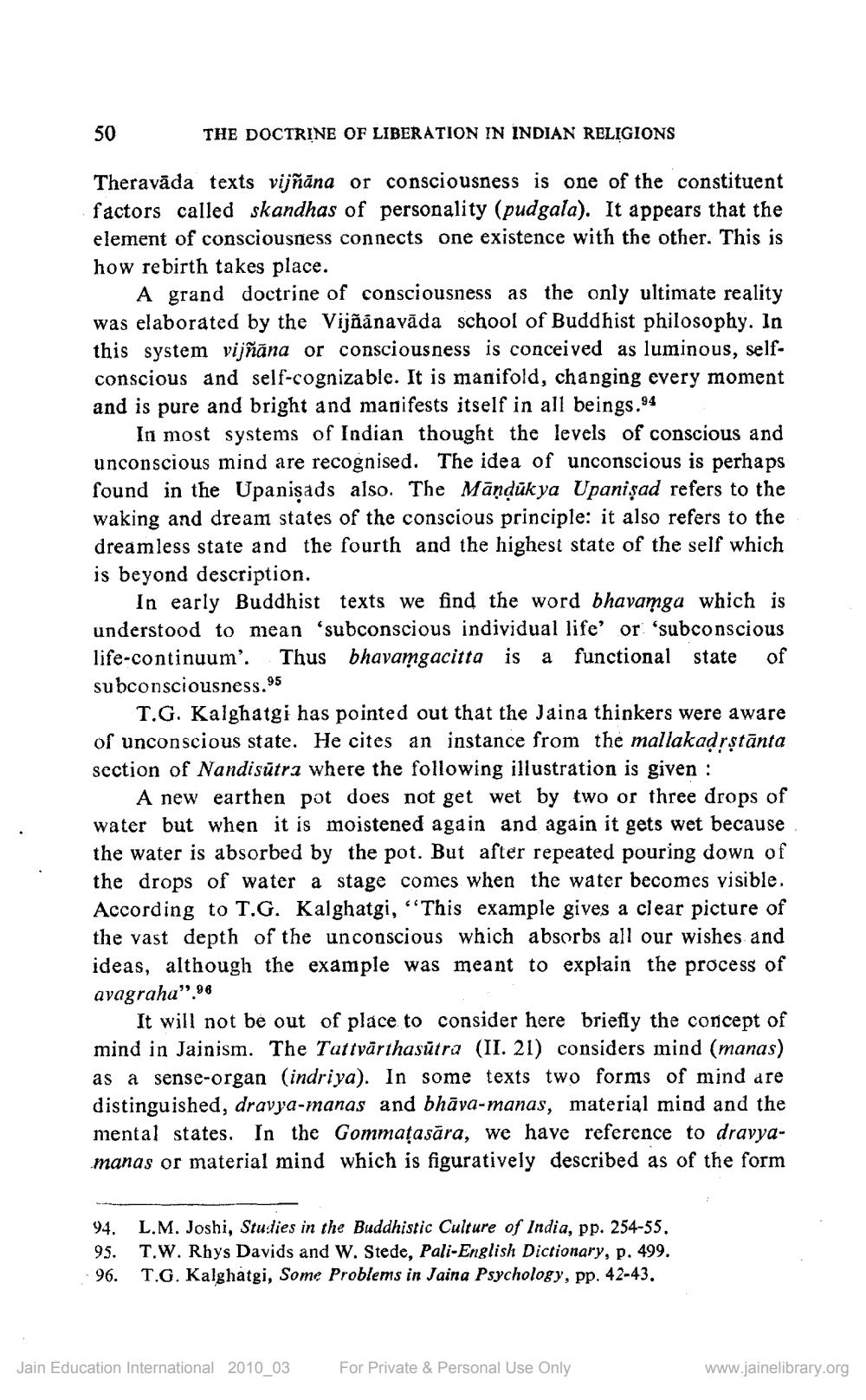________________
50
THE DOCTRINE OF LIBERATION IN INDIAN RELIGIONS
Theravada texts vijñāna or consciousness is one of the constituent factors called skandhas of personality (pudgala). It appears that the element of consciousness connects one existence with the other. This is how rebirth takes place.
A grand doctrine of consciousness as the only ultimate reality was elaborated by the Vijñānavāda school of Buddhist philosophy. In this system vijñana or consciousness is conceived as luminous, selfconscious and self-cognizable. It is manifold, changing every moment and is pure and bright and manifests itself in all beings.94
In most systems of Indian thought the levels of conscious and unconscious mind are recognised. The idea of unconscious is perhaps found in the Upanisads also. The Mandukya Upanisad refers to the waking and dream states of the conscious principle: it also refers to the dreamless state and the fourth and the highest state of the self which is beyond description.
In early Buddhist texts we find the word bhavamga which is understood to mean 'subconscious individual life' or 'subconscious life-continuum'. Thus bhavamgacitta is a functional state of subconsciousness.95
T.G. Kalghatgi has pointed out that the Jaina thinkers were aware of unconscious state. He cites an instance from the mallakaḍṛṣtānta section of Nandisutra where the following illustration is given :
A new earthen pot does not get wet by two or three drops of water but when it is moistened again and again it gets wet because the water is absorbed by the pot. But after repeated pouring down of the drops of water a stage comes when the water becomes visible. According to T.G. Kalghatgi, "This example gives a clear picture of the vast depth of the unconscious which absorbs all our wishes and ideas, although the example was meant to explain the process of avagraha" 96
It will not be out of place to consider here briefly the concept of mind in Jainism. The Tattvärthasutra (II. 21) considers mind (manas) as a sense-organ (indriya). In some texts two forms of mind are distinguished, dravya-manas and bhava-manas, material mind and the mental states. In the Gommaṭasara, we have reference to dravyamanas or material mind which is figuratively described as of the form
94. L.M. Joshi, Studies in the Buddhistic Culture of India, pp. 254-55. 95. T.W. Rhys Davids and W. Stede, Pali-English Dictionary, p. 499. T.G. Kalghatgi, Some Problems in Jaina Psychology, pp. 42-43.
96.
Jain Education International 2010_03
For Private & Personal Use Only
www.jainelibrary.org




